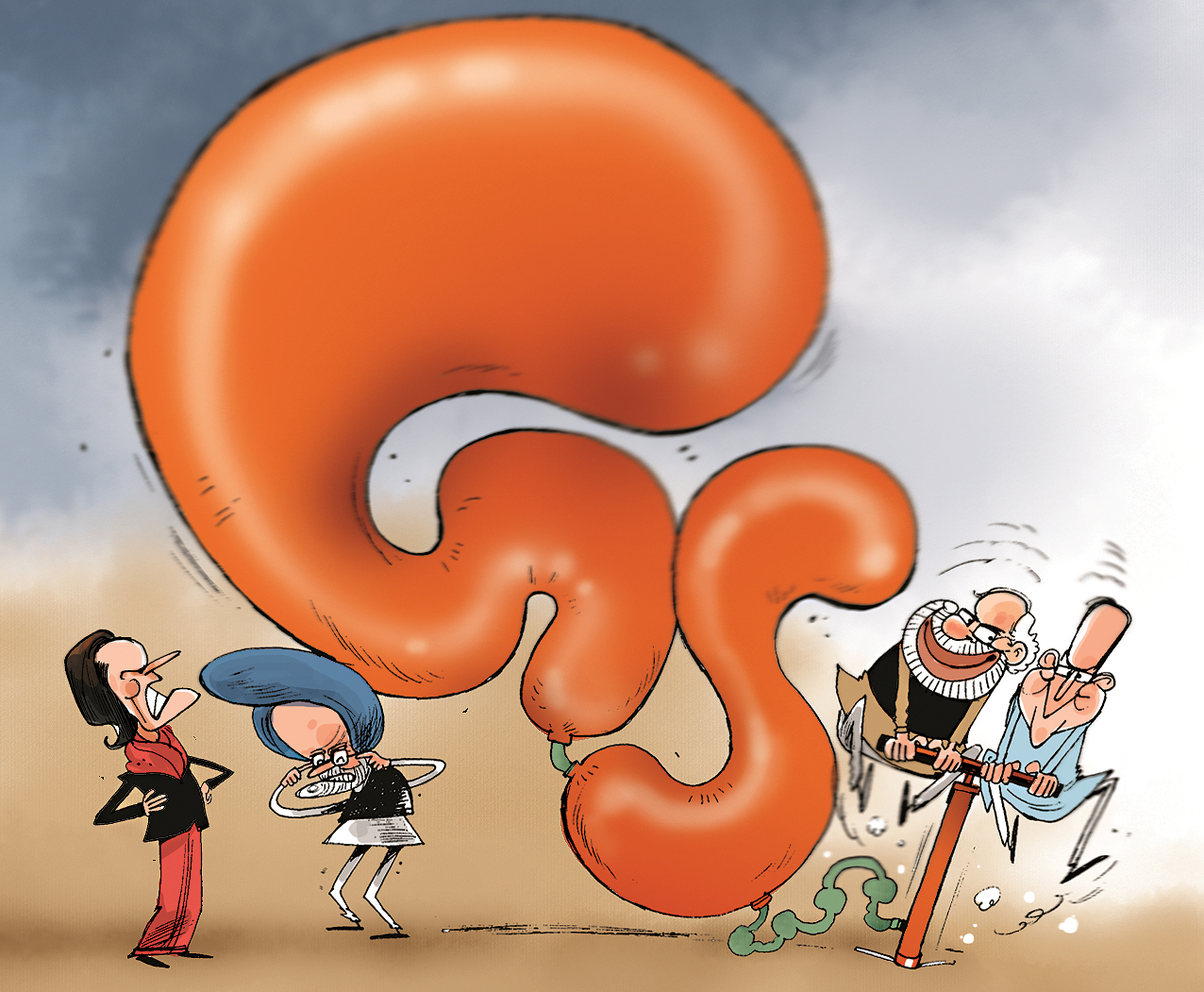Opinions
Least Bad, Most Transformative : GST
Author - Baijayant "Jay" Panda
Posted on - 5 July 2017
Image Source - https://goo.gl/yPziVD
Information
This article was published in 'The Times of India' on 5th July, 2017.
Shortlink
Navigation
Least bad, most transformative: GST in its present form is not perfect, but nevertheless profoundly good
Too often we disparage the good because it is not perfect. There is no better, or more ironic, demonstration of this than some of the whingeing about the just launched Goods and Services Tax.
Of course, by now we should be inured to the spectacle of political parties in the opposition stridently opposing the very same issues they had championed when in government. As also parties in government pushing through initiatives they had vehemently opposed when in opposition. But what is remarkable about GST is opposition parties opposing what they have only recently not just agreed and given shape to, while being in the opposition, but also voted for in Parliament.
That process lasted more than two and a half years on the home stretch, from the December 2014 reintroduction of the GST bill in Parliament till just hours before last week’s midnight launch, with last-minute revisions to the rates on some items. Overall, the process had taken 18 years since being conceptualised in then Prime Minister Vajpayee’s economic advisory panel.
The nearly two-decades long journey saw different actors rise to the occasion at different times, laying the groundwork for a fundamental rejig of India’s indirect taxation system. For instance, it saw the sagacity of Vajpayee, who assigned the task of designing GST to a committee headed by Asim Dasgupta, a PhD in economics from the Massachusetts Institute of Technology (MIT) then serving as the finance minister of Communist Bengal.
Also on display were the brave attempts, without requisite support in Parliament, by Prime Minister Manmohan Singh and his finance ministers P Chidambaram and Pranab Mukherjee. They first mentioned GST in the 2006 budget and in 2011 introduced the bill. As with many important initiatives during the UPA’s hapless decade, GST did not pass. Nonetheless, its listing in Parliament put a crucial building block in place, making it difficult thereafter for Congress to oppose its passage beyond a point.
However, it needed Prime Minister Narendra Modi’s massive electoral successes, not just in the 2014 general election that gave him the numbers in the Lok Sabha, but also in subsequent state elections that in turn have been adding to his numbers in the Rajya Sabha, for GST to become feasible. And even after that, it took his steely-eyed determination to leave a lasting legacy, and finance minister Arun Jaitley’s considerable strategic and negotiating acumen, to make GST finally happen.
None of that means GST in its present form is perfect, in fact far from it. It is not the simple, one-rate, one set of documentation, national tax originally envisaged. The give and take process of reaching a final iteration that could get sufficient votes in the Parliament of the planet’s largest, most diverse democracy, took a toll. The best description of GST now is that it is the least bad of all the versions that stood a chance of being legislated.
But why should we be excited about what some call a suboptimal version? The answer lies in welcoming that which, even if not perfect, is profoundly good. GST immediately replaces more than a dozen existing taxes. Although not as simple as it should ideally have been – and perhaps can evolve to be in future – GST today nevertheless dramatically simplifies India’s indirect taxes, as well as ease of doing business.
Furthermore, it removes the cascading effect of taxes on the vast majority of items consumed by Indians. And in doing so, creates inbuilt incentives for compliance, with evaders willy nilly having to bear higher input costs than their GST-compliant peers and competitors.
Most importantly, it finally unites India as a single market after seven decades of Independence. The value of that cannot be overstated, with incalculable benefits likely to emerge from no longer hobbling ourselves with fragmented regional markets and disparate tax regulations.
In some ways, the implementation of GST has the potential to be as transformative for India’s economy as the Interstate Commerce Act was for the United States. That was enacted in 1887, more than a century after US independence, to overcome regional monopolies by railway companies. Paving the way for federal rather than state regulations in a host of sectors, it unified America’s fragmented domestic markets and helped propel it to become the largest economy in the world.
So why would an opposition party, which loses no opportunity to brag about having first moved the GST bill in Parliament, forfeit the opportunity to share the credit at its gala launch? The reason is not cussedness, as some believe. It is, instead, cold political calculus.
Right or wrong, their calculation is that the complexity of such a radical tax makeover will lead to serious glitches and sustained dissatisfaction. In other words, ideal circumstances to stir the political pot, but only if you have kept adequate distance from the celebrations.
That approach by the principal opposition party – essentially, waiting for this government to trip up – has been more or less its only strategy for the past three years. It has not worked so far, and there is no reason to believe it suddenly will now. To be relevant again, they must go beyond hoping for their nemesis to implode.


